Bele Holige or obbattu is one of the most filling and delicious sweets. It is a sweet dal stuffed poli/holige. During a festival or a function we all look for one dish that can feed a big crowd which is also filling. Sweets generally are accessories in a big spread. Yes, preparing bele holige or obbattu is effort but when you have mastered the process of making the dal filling then preparing bele holige or obbattu will be easy especially if you have a few people to assist/work with you.
I have used whole wheat flour/atta for the outer covering dough whereas generally all purpose flour (maida) and chiroti rava (fine rava) are used to prepare the dough along with a pinch of turmeric. I prefer whole wheat flour(learnt it from my mother), holige turn out to be soft and do not become stretchy and chewy when they are kept for a while.
*Updated with new pictures for Ugadi 2019. Try more holige recipes:
Kayi Holige/Coconut Holige
Dry Nuts Holige
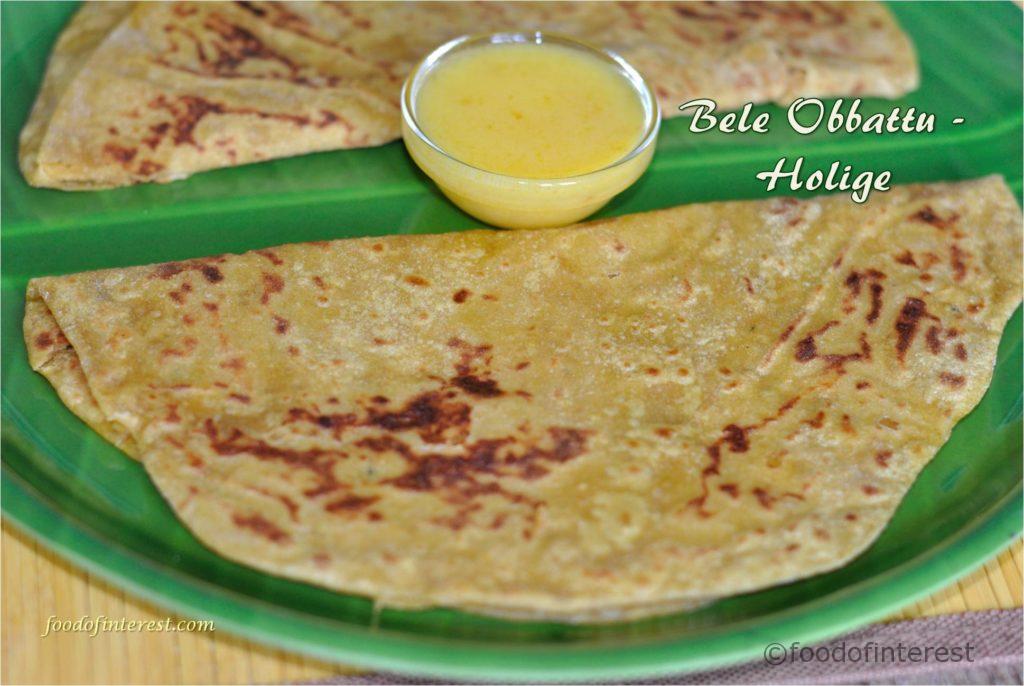
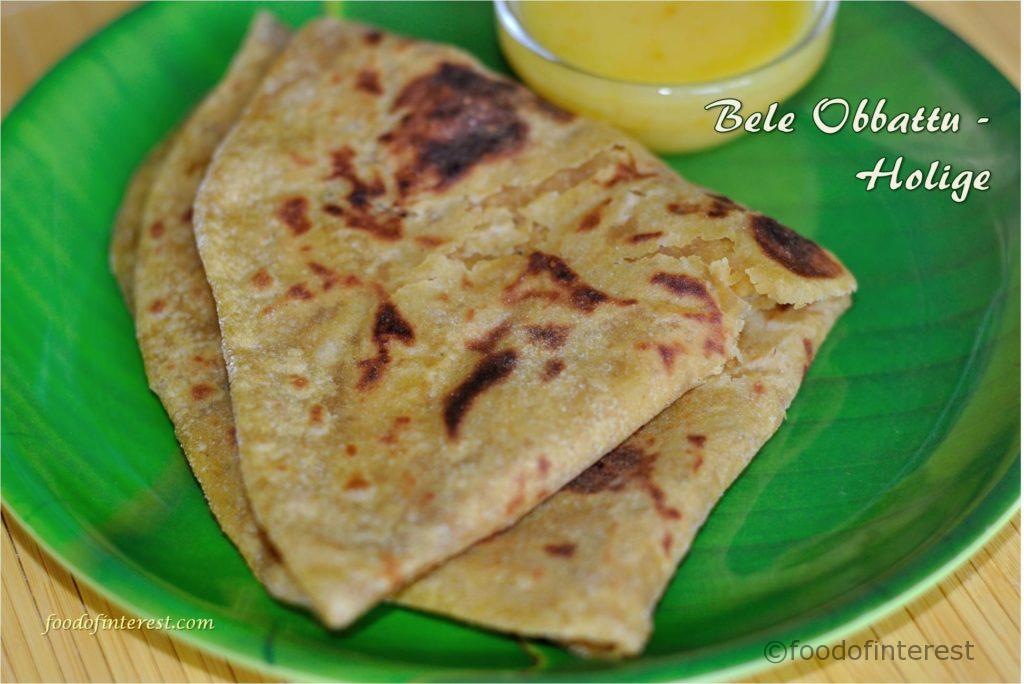
Infact they taste better as they are kept and taste best with a cup of boiled and cooled unsweetened milk or eat them hot with some ghee on top! Perfect combination for upcoming Ugadi festival. Try Hayagreeva, Vermicelli Payasa, Tambittu and other festival recipes for Ugadi.

- 1 Cup toor dal/arhar dal/pigeon pea dal/togari bele
- ½ Tbsp chana dal/gram dal/yellow dal/kadalebele
- ¾ Cup packed grated coconut
- 2 Tbsp + 1 Tbsp desi ghee
- 200 Gm or 1 Cup grated/pieces of soft gur/jaggery/bella
- 2 Tbsp almond powder (optional)
- A small pinch of freshly grated nutmeg/jaakayi
- 7-8 powdered elaichi/cardamom
- 1½ Cups whole wheat flour + extra for dusting when rolling holige
- 1 pinch turmeric
- 2-3 Tbsp oil
- A small pinch of salt
- Water to make dough
- Clean and wash both the dals in water. Keep for 5 minutes. Make dough with whole wheat flour, salt and water, knead with oil and keep it aside covered
- Cook the dals with 2 to 2½ Cup of water. They should be just cooked and not mushy and watery. If you press one cooked dal with the back of the spoon it should be just soft
- Drain the rest of the water into a separate vessel which is called 'kattu' will be used to prepare rasam/holige saaru to mix with rice and eat. Let the dal cool
- Meanwhile grind grated coconut without any water into a rough paste
- To this add cooked, drained, cooled dal and grind into a paste. Do not add any water. It should be thick
- Add 2 Tbsp desi ghee into a thick pan. Add the prepared dal paste to this
- Add grated/pieces of good quality jaggery
- Jaggery melts into the dal and mixes with it. It comes together quite quickly if you have not added any extra water while grinding
- To this thickened paste, add elaichi powder and nutmeg powder
- Add almond powder and mix well
- Add 1 more Tbsp of desi ghee and mix well till it is smooth and it should not be sticky
- Turn off heat when filling starts leaving the pan
- Remove into a separate bowl, lightly pat and keep aside to cool
- To make holige/obbattu, pinch medium fist sized balls off the outer covering dough and filling, filling balls can be smaller
- Take a outer covering dough ball, press it lightly into a small puri sized round. On top of this place a dal filling ball in the centre
- Start pinching the outer covering dough over the filling with your fingers
- When it comes together, it will be like a parcel. Ensure all of the filling gets covered
- Press lightly and roll out into a holige/obbattu using a rolling pin/belan with light hands
- To roast holige, put the rolled out holige on a heated skillet/tawa, roast by applying oil or desi ghee
- Serve hot or at room temperature with desi ghee and boiled and cooled unsweetened milk
Only chana dal can also be used but toor dal is best for digestion, a little easy on the stomach
If the filling feels sticky after removing from heat, add a little more ghee , mix for 2 more minutes. Once cooled keep in refrigerator for 2 hours so that all extra moisture is absorbed by the dal
Add a pinch of turmeric to the outer covering if preferred
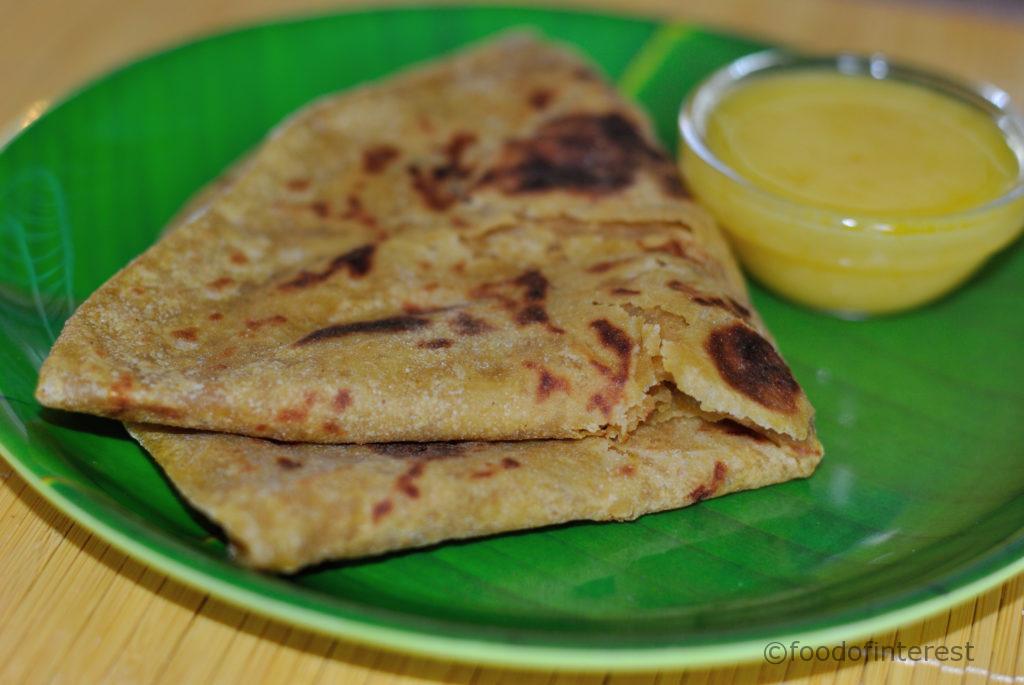
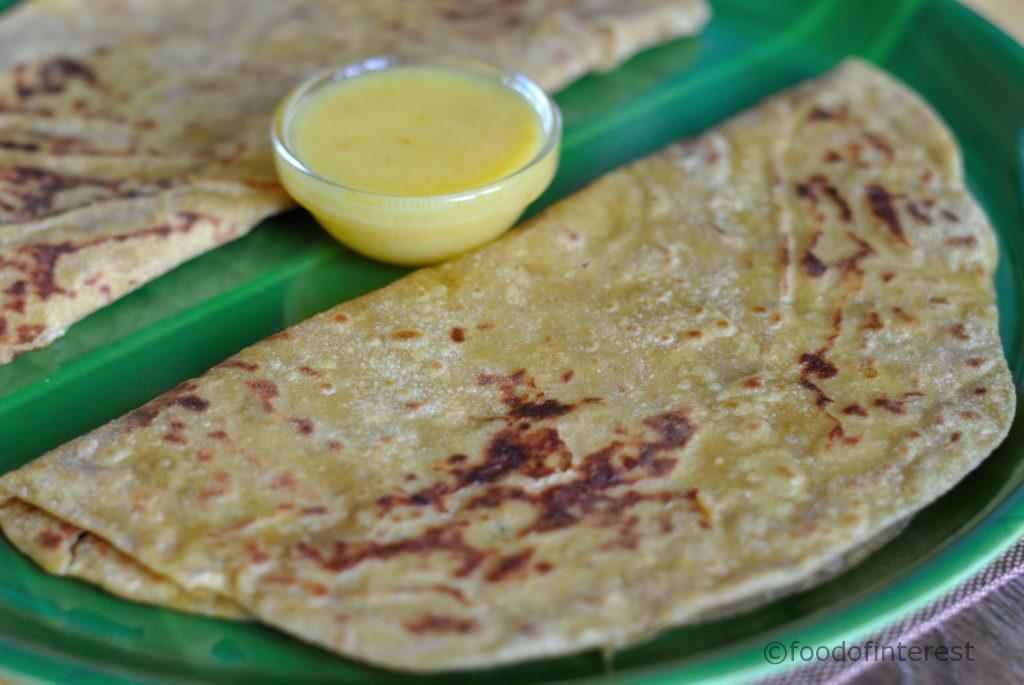
Stepwise:
Clean and wash both the dals in water. Keep for 5 minutes. Make dough with whole wheat flour, salt and water, knead with oil and keep it aside covered
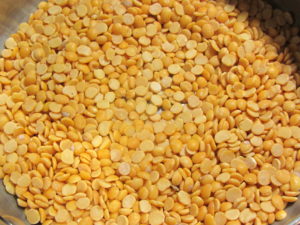
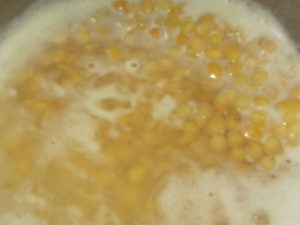
Cook the dals with 2 to 2 1/2 Cup of water. They should be just cooked and not mushy and watery. If you press one cooked dal with the back of the spoon it should be just soft

Drain the rest of the water into a separate vessel which is called 'kattu' will be used to prepare rasam/holige saaru to mix with rice and eat. Let the dal cool
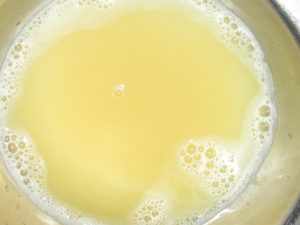

Meanwhile grind grated coconut without any water into a rough paste
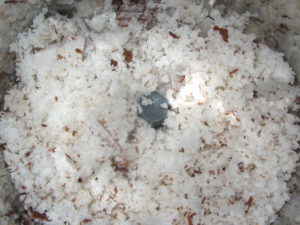
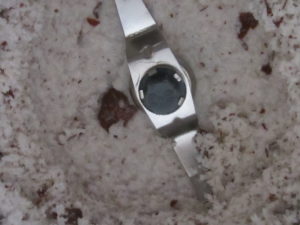
To this add cooked, drained, cooled dal and grind into a paste. Do not add any water. It should be thick
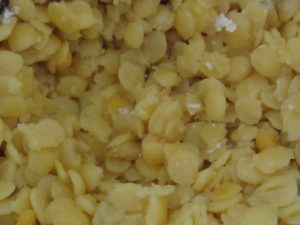
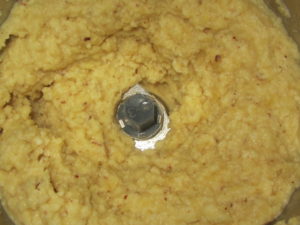
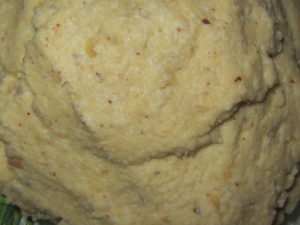
Add 2 Tbsp desi ghee into a thick pan. Add the prepared dal paste to this
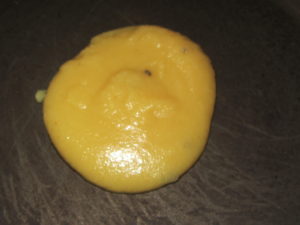
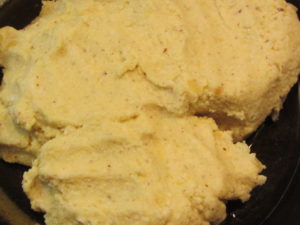
Add grated/pieces of good quality jaggery
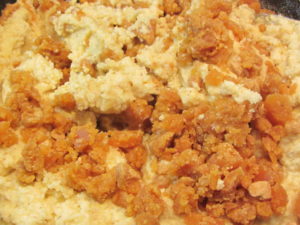
Jaggery melts into the dal and mixes with it. It comes together quite quickly if you have not added any extra water while grinding
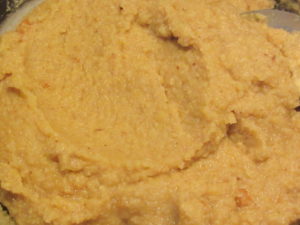
To this thickened paste, add elaichi powder and nutmeg powder
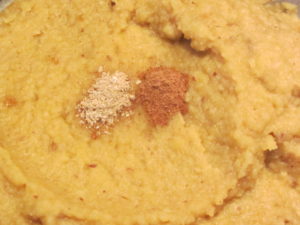
Add almond powder and mix well
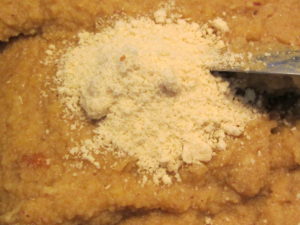
Add 1 more Tbsp of desi ghee and mix well till it is smooth and it should not be sticky
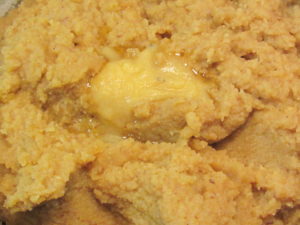
Turn off heat when filling starts leaving the pan
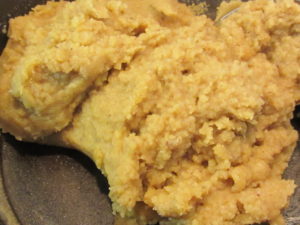
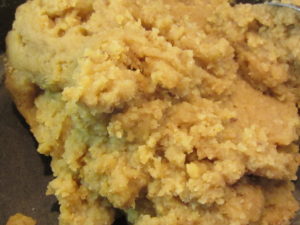
Remove into a separate bowl, lightly pat and keep aside to cool
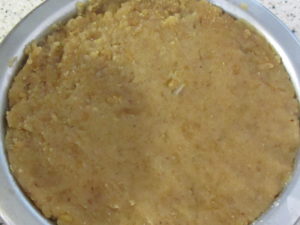
To make holige/obbattu, pinch medium fist sized balls off the outer covering dough and filling, filling balls can be smaller
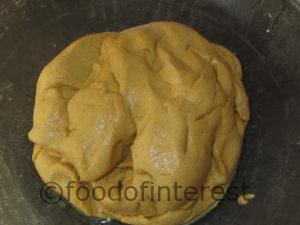
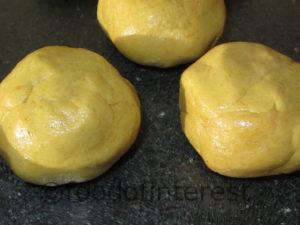
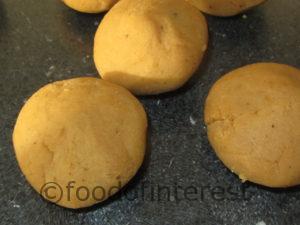
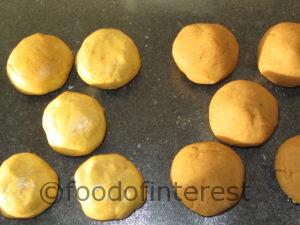
Take a outer covering dough ball, press it lightly into a small puri sized round. On top of this place a dal filling ball in the centre
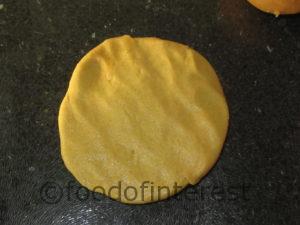
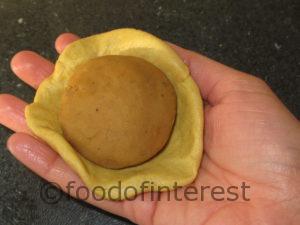
Start pinching the outer covering dough over the filling with your fingers
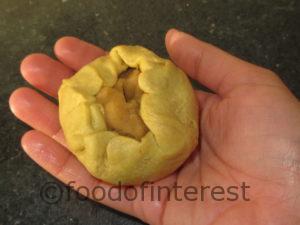
When it comes together, it will be like a parcel. Ensure all of the filling gets covered
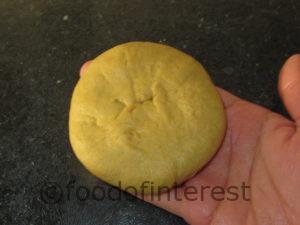
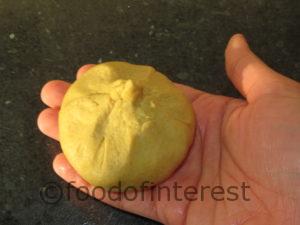
Press lightly and roll out into a holige/obbattu using a rolling pin/belan with light hands
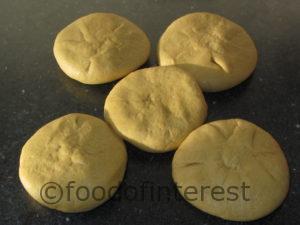
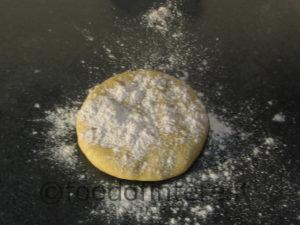
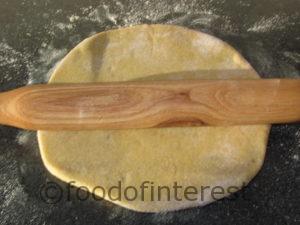
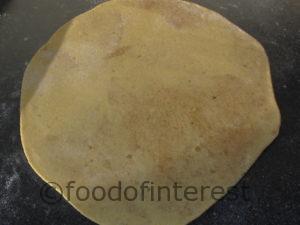
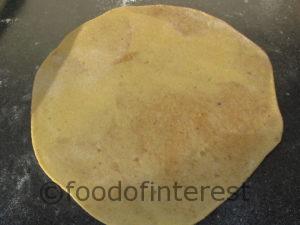
To roast holige, put the rolled out holige on a heated skillet/tawa, roast by applying oil or desi ghee
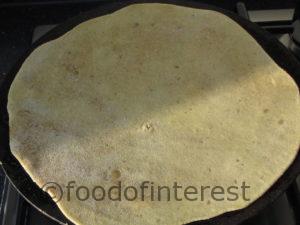

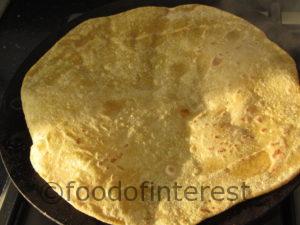
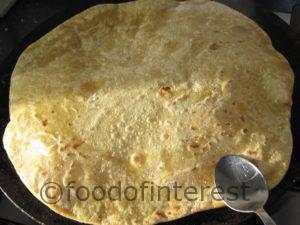
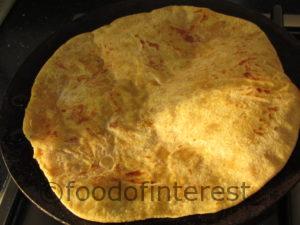
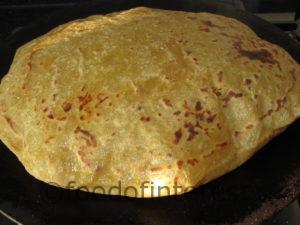
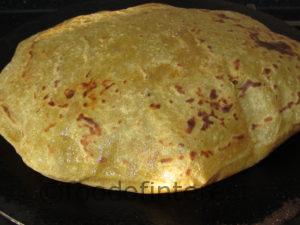
Serve hot or at room temperature with desi ghee and boiled and cooled unsweetened milk
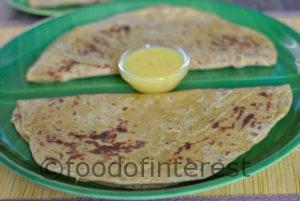
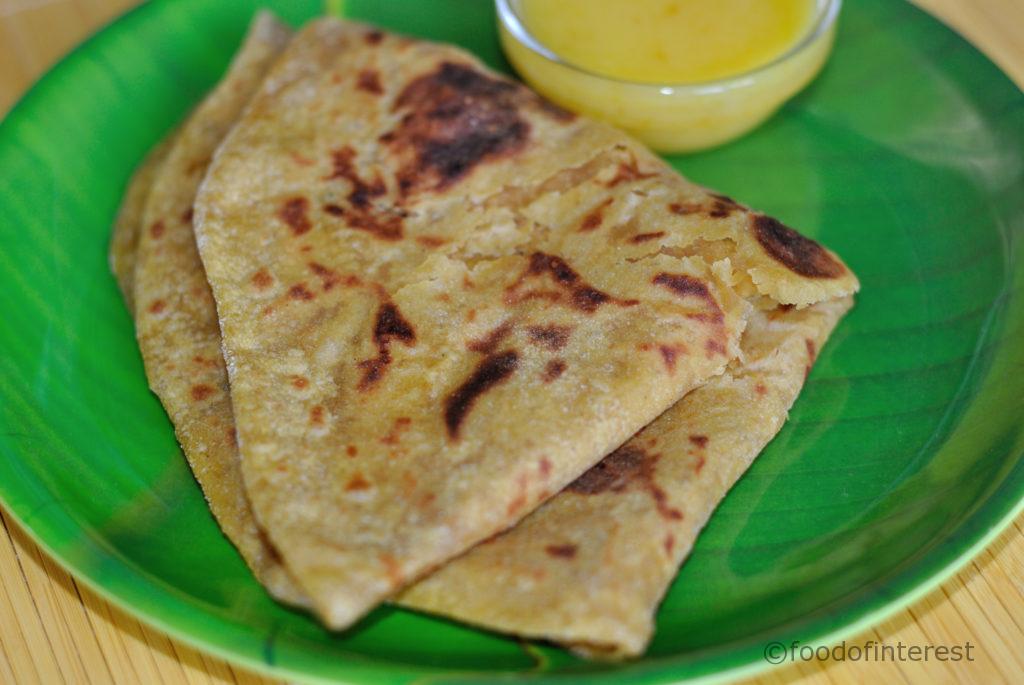




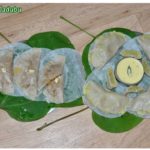

Loved the reciepe vindhya, the holige looks yummy,
Have not tried with wheat flour,
But your stuffing, and holige looks amazing
Will try out when i can
Thank you! Glad you liked it